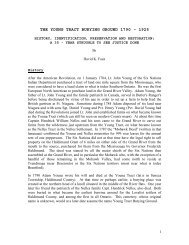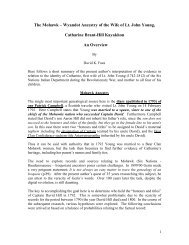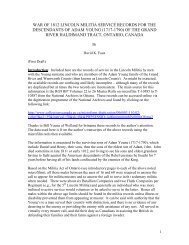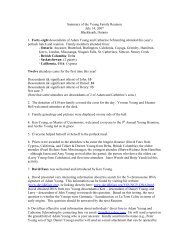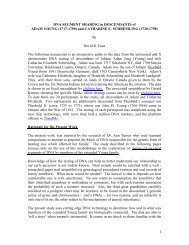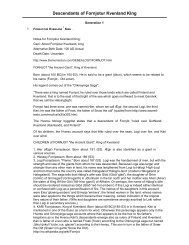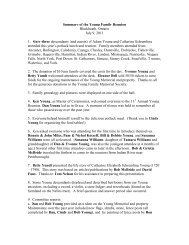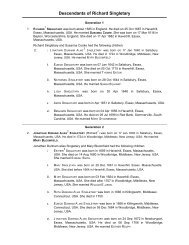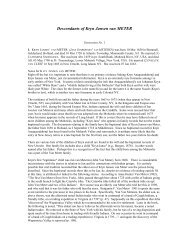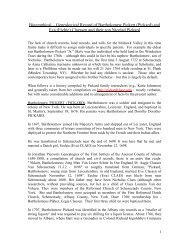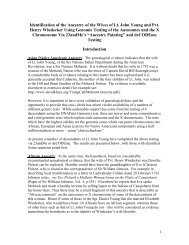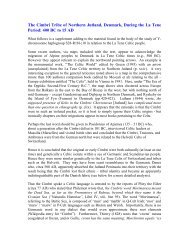Part 2 - Davidkfaux.org
Part 2 - Davidkfaux.org
Part 2 - Davidkfaux.org
You also want an ePaper? Increase the reach of your titles
YUMPU automatically turns print PDFs into web optimized ePapers that Google loves.
intervention led to a treaty in 228 BC (Ellis, 1998). The fate of these folk are unknown –although this region is immediately east of the Adriatic coast of Italy.R-M269 percentages – Pericic et al. (2005) found that whereas only 1% of Bosnians and4% of Herzegovenians were R, 11% of Serbians, 16% of Croatians, and 21% of KosavarAlbanians were in this phylogenetic category.R-U152 predictions – it is completely unknown at present how many from the Balkanswould emerge as R-M269*, “Eastern” versus “Western” varieties. The documentedpresence of Celtic tribes until relatively recent times does suggest that perhaps 30% of theR-M269 here is R-U152.R-U152 findings – None to date.ROMANIA AND BULGARIA: These areas are the former Thracian and Dacian areas.Any La Tene settlements here likely occurred in the era surrounding the attack on Delphiin 279 BC. Some Celts may have attempted to settle here permanently, such as the groupat Tylis (Thy) on the Black Sea, who obtained their wealth from robbing others.Considering that in Jutland the region of Thy was a heavily populated region at this time(apparently also experiencing a precipitous popultion decline), it could be posited thatTylis on the Black Sea was settled by Cimbri (who were known to Germans as“robbers”). The Tiza and Transylvanian settlements nestled into the CarpathianMountains were, at least for a time, extensive. Koch (2007) noted, The Carpathian basinis thus curious in being surrounded by Celtic linguistic evidence, but showing a gapingvoid at the very centre, while nonetheless having in this empty zone both abundant LateBronze Age and Later Iron Age materials of types closely associated with Celtic nameevidence further west. This uneven pattern makes it difficult, to reach any conclusionabout how Celtic speaking Transylvania ever was, much less whether it had beencontinuously Celtic speaking since the beginning of the Urnfield period c. 1400 BC untilthe Dacian wars of the 1 st century BC (p.28).The Thracians and Dacians may, however, have pushed all Celtic groups out of the area,or at least destroyed any power they might have had, in 231-1 BC. Taylor (1999) reportsthat, The Transylvanian Celts (the Boii and Helvetii) were defeated by Burebista in 60BC and forced westward (p.404) which begs the question as to how many Celts, if any,remained in the Transylvanian area after that date. Cunliffe (1999) in discussing thearmor of the Dacians, stated that at the end of the 1 st Century AD the Dacians used,shields like those of the Celts, from whom they were in part descended (p.438).The map below shows later La Tene sites and presumably settlement in Romania.According to the Alznik web pages, The greatest density of Latene sites are in the southof Muntenia with a low level throughout Oltenia, south Transylvania and across theCarpathians into Moldavia.41



